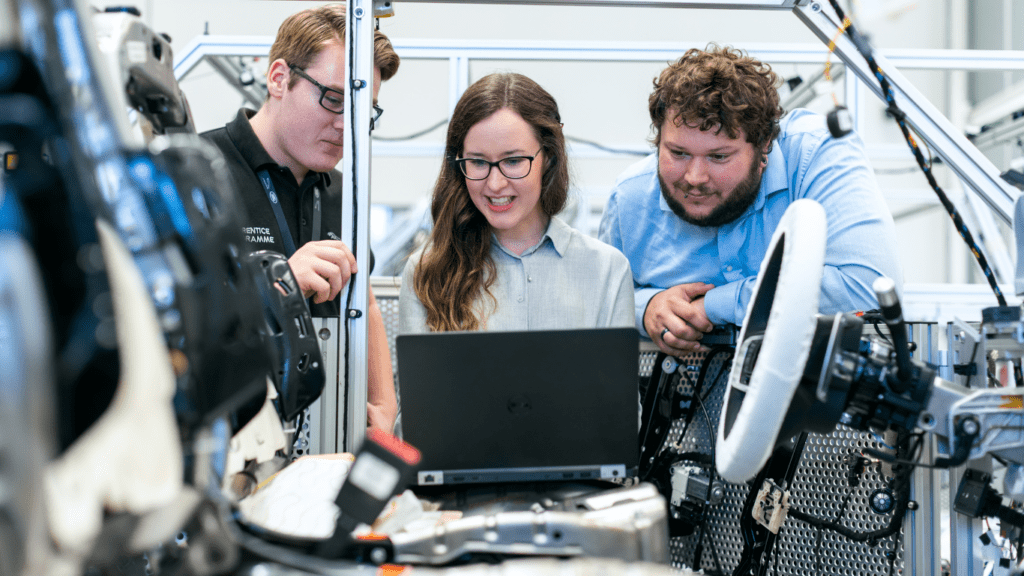Overview of Supply Chain Disruptions
Supply chain disruptions are shaking the automotive market. I see two major issues causing these disruptions: semiconductor shortages and shipping delays.
Semiconductor Shortages
Semiconductors are crucial for modern cars. They’re used in various systems including:
- infotainment
- safety features
- engine control units
Production delays in semiconductors are due to several factors including high demand for electronics and manufacturing bottlenecks. I noticed that lead times for semiconductor orders have increased from a typical 12 weeks to over 26 weeks, significantly affecting car production schedules.
Shipping Delays
Global shipping delays are another challenge. Increased demand for goods, labor shortages at ports, and disruptions from COVID-19 lockdowns have compounded shipping issues. Container shipping costs have surged, with some routes experiencing a sixfold increase in prices over the past two years. This creates additional costs and delays for automakers reliant on just-in-time delivery systems.
Raw Material Shortages
Raw materials like steel and aluminum are also experiencing shortages. Prices for these essential materials have risen sharply, driven by both increased demand and supply chain constraints. For example, steel prices have doubled from $500 per ton to over $1,000 per ton within a year, impacting the cost of manufacturing vehicles.
Labor Shortages
Labor shortages in manufacturing and logistics further exacerbate supply chain issues. With fewer workers available, production and delivery times have increased. Reports indicate a 20% reduction in workforce availability in key automotive manufacturing hubs, leading to production halts and backlogs.
Impact on Dealerships
Car dealerships are feeling the pinch as inventory levels plummet. Most dealers have reported a 50% drop in new car inventory compared to pre-pandemic levels. This short supply drives up prices and leaves customers waiting longer for their vehicles.
These interconnected issues create a ripple effect across the entire automotive supply chain, making it challenging for manufacturers, dealers, and consumers alike. Understanding these disruptions is crucial for anyone navigating the automotive market today.
Key Factors Contributing to Disruptions
Several elements drive the ongoing supply chain challenges plaguing the automotive market. Each factor interlinks with the others, creating a complex web of issues that ripple through production, distribution, and sales.
Global Pandemic
The COVID-19 pandemic disrupted the global supply chain. Factories shut down due to health restrictions, creating production gaps. Even as restrictions eased, ongoing outbreaks continued to hamper operations. Additionally, consumer behavior shifted, with a sudden drop in demand followed by a rapid surge, making supply forecasting difficult.
Labor Shortages
Labor shortages further stress the system. Automotive manufacturers and suppliers face difficulties securing sufficient workforces. Workers in manufacturing plants, warehouses, and transportation sectors are crucial but hard to find in today’s job market. This shortage slows production lines and extends delivery times.
Raw Material Shortages
Shortages of essential raw materials impact manufacturing. Steel, aluminum, and other metals see supply constraints, driving up costs. Factories struggle to maintain production schedules without a steady supply of these materials. For instance, procurement of rare earth elements critical for electric vehicles faces significant delays due to geopolitical factors.
Transportation Bottlenecks
- Transportation bottlenecks exacerbate the situation.
- Ports experience heavy congestion, with long waiting times for unloading.
- The shortage of shipping containers and high demand for goods have led to skyrocketing freight costs.
- These challenges slow down the movement of parts and finished vehicles, delaying delivery to dealerships and ultimately to consumers.
- Together, these factors create significant hurdles in the automotive supply chain. Understanding them is essential for navigating the market challenges.
Impact on Automotive Manufacturing

Supply chain disruptions are severely impacting automotive manufacturing. Below, I outline the key areas demonstrating these impacts.
Delays in Production
Production delays are afflicting the automotive industry, extending timelines significantly. Semiconductor shortages, which delay critical electronics, are a major cause. Assembly lines are slowing down as manufacturers wait for these essential components. According to IHS Markit, semiconductor shortages alone have delayed the production of over 7 million vehicles globally in 2021.
Increased Costs
Costs are rising across all manufacturing segments. Raw material prices, particularly for steel and aluminum, are up. Shipping costs have also climbed due to container shortages and increased demand for freight services. According to the Bureau of Labor Statistics, steel prices increased by 50% in the past 18 months, impacting the cost structure of vehicle manufacturing.
Reduction in Vehicle Availability
Vehicle availability is plummeting due to supply chain disturbances. Dealerships are reporting significantly lower inventories, with some seeing as much as a 50% reduction compared to pre-pandemic levels. The chip shortage means fewer cars are being produced, and what’s available is often sold quickly, driving both scarcity and higher prices.
These points summarize how manufacturing within the automotive sector faces unprecedented challenges, affecting production timelines, costs, and vehicle availability.
Market Reaction and Adaptation
Supply chain disruptions are prompting significant shifts in the automotive market. Manufacturers, suppliers, and consumers are all forced to adapt to the new reality.
Shifts in Consumer Demand
Consumers are adapting to longer wait times and higher prices. Demand for used cars is skyrocketing, as they represent a more immediate and affordable option. Many buyers are holding off on new car purchases, waiting for better deals and improved inventory levels. Brands offering flexible financing options are attracting more buyers.
Innovations and Alternatives
Manufacturers are turning to innovative solutions to mitigate supply chain disruptions. Some are redesigning vehicles to use fewer semiconductors, while others explore alternative materials to counter raw material shortages. Electric vehicle (EV) development has accelerated, with companies investing heavily in batteries and related technologies. This shift not only addresses supply constraints but also aligns with growing environmental concerns.
Changes in Supplier Relationships
Auto manufacturers are re-evaluating their relationships with suppliers. They’re diversifying their supplier base to reduce dependency on single sources. Long-term contracts are becoming more common, providing stability and ensuring supply. Collaboration with local suppliers is increasing to bypass international shipping delays. These changes aim to create a more resilient supply chain capable of withstanding future disruptions.
Future Outlook for the Automotive Market
The automotive market’s future hinges on several recovery and strategic planning aspects. Let’s delve into possible recovery scenarios and long-term adjustments manufacturers and suppliers might adopt.
Potential Recovery Scenarios
Multiple scenarios could play out for the automotive market’s recovery. V-shaped recoveries may kickstart rapid improvements once supply chain issues stabilize. A surge in semiconductor production and improved logistics could catalyze a swift rebound. U-shaped recoveries, however, might see a more extended period of adjustment due to lasting disruptions and structural changes in supply chains. An extended semiconductor shortage or prolonged labor issues could slow recovery. L-shaped recoveries represent a worst-case scenario, with extended stagnation in production and availability, requiring substantial industry overhauls and government interventions.
Long-Term Strategic Adjustments
Automotive manufacturers and suppliers are likely to make strategic adjustments to mitigate future disruptions. Diversifying supply chains could become a key strategy. Companies now seek multiple suppliers for critical components, reducing reliance on single sources. Emphasizing local sourcing can also shorten lead times and avoid international shipping delays. Investing in digital transformation stands as another long-term strategy. Advanced technologies like blockchain can enhance transparency and traceability, helping identify and address potential disruptions early. Developing in-house capabilities for critical components, particularly in semiconductor design and manufacturing, might become more prevalent. Aligning with environmental initiatives, investments in electric vehicles (EVs) will likely increase, focusing on creating resilient supply chains for battery materials.




